This is a preprint.
Structural classification of neutralizing antibodies against the SARS-CoV-2 spike receptor-binding domain suggests vaccine and therapeutic strategies
- PMID: 32869026
- PMCID: PMC7457611
- DOI: 10.1101/2020.08.30.273920
Structural classification of neutralizing antibodies against the SARS-CoV-2 spike receptor-binding domain suggests vaccine and therapeutic strategies
Update in
-
SARS-CoV-2 neutralizing antibody structures inform therapeutic strategies.Nature. 2020 Dec;588(7839):682-687. doi: 10.1038/s41586-020-2852-1. Epub 2020 Oct 12. Nature. 2020. PMID: 33045718 Free PMC article.
Abstract
The COVID-19 pandemic presents an urgent health crisis. Human neutralizing antibodies (hNAbs) that target the host ACE2 receptor-binding domain (RBD) of the SARS-CoV-2 spike1-5 show therapeutic promise and are being evaluated clincally6-8. To determine structural correlates of SARS-CoV-2 neutralization, we solved 8 new structures of distinct COVID-19 hNAbs5 in complex with SARS-CoV-2 spike trimer or RBD. Structural comparisons allowed classification into categories: (1) VH3-53 hNAbs with short CDRH3s that block ACE2 and bind only to "up" RBDs, (2) ACE2-blocking hNAbs that bind both "up" and "down" RBDs and can contact adjacent RBDs, (3) hNAbs that bind outside the ACE2 site and recognize "up" and "down" RBDs, and (4) Previously-described antibodies that do not block ACE2 and bind only "up" RBDs9. Class 2 comprised four hNAbs whose epitopes bridged RBDs, including a VH3-53 hNAb that used a long CDRH3 with a hydrophobic tip to bridge between adjacent "down" RBDs, thereby locking spike into a closed conformation. Epitope/paratope mapping revealed few interactions with host-derived N-glycans and minor contributions of antibody somatic hypermutations to epitope contacts. Affinity measurements and mapping of naturally-occurring and in vitro-selected spike mutants in 3D provided insight into the potential for SARS-CoV-2 escape from antibodies elicited during infection or delivered therapeutically. These classifications and structural analyses provide rules for assigning current and future human RBD-targeting antibodies into classes, evaluating avidity effects, suggesting combinations for clinical use, and providing insight into immune responses against SARS-CoV-2.
Figures
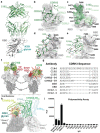
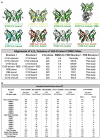





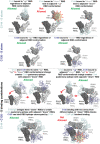
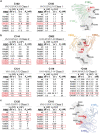
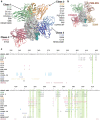
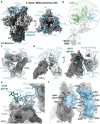
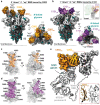


References
Extended Data References
-
- Wang B. et al. Bivalent binding of a fully human IgG to the SARS-CoV-2 spike proteins reveals mechanisms of potent neutralization. bioRxiv 10.1101/2020.07.14.203414(2020). - DOI
Publication types
Grants and funding
LinkOut - more resources
Full Text Sources
Other Literature Sources
Miscellaneous
